IT’S A GREAT TIME TO BE A FAN!
Maggie’s World 006: Fanning Yourself
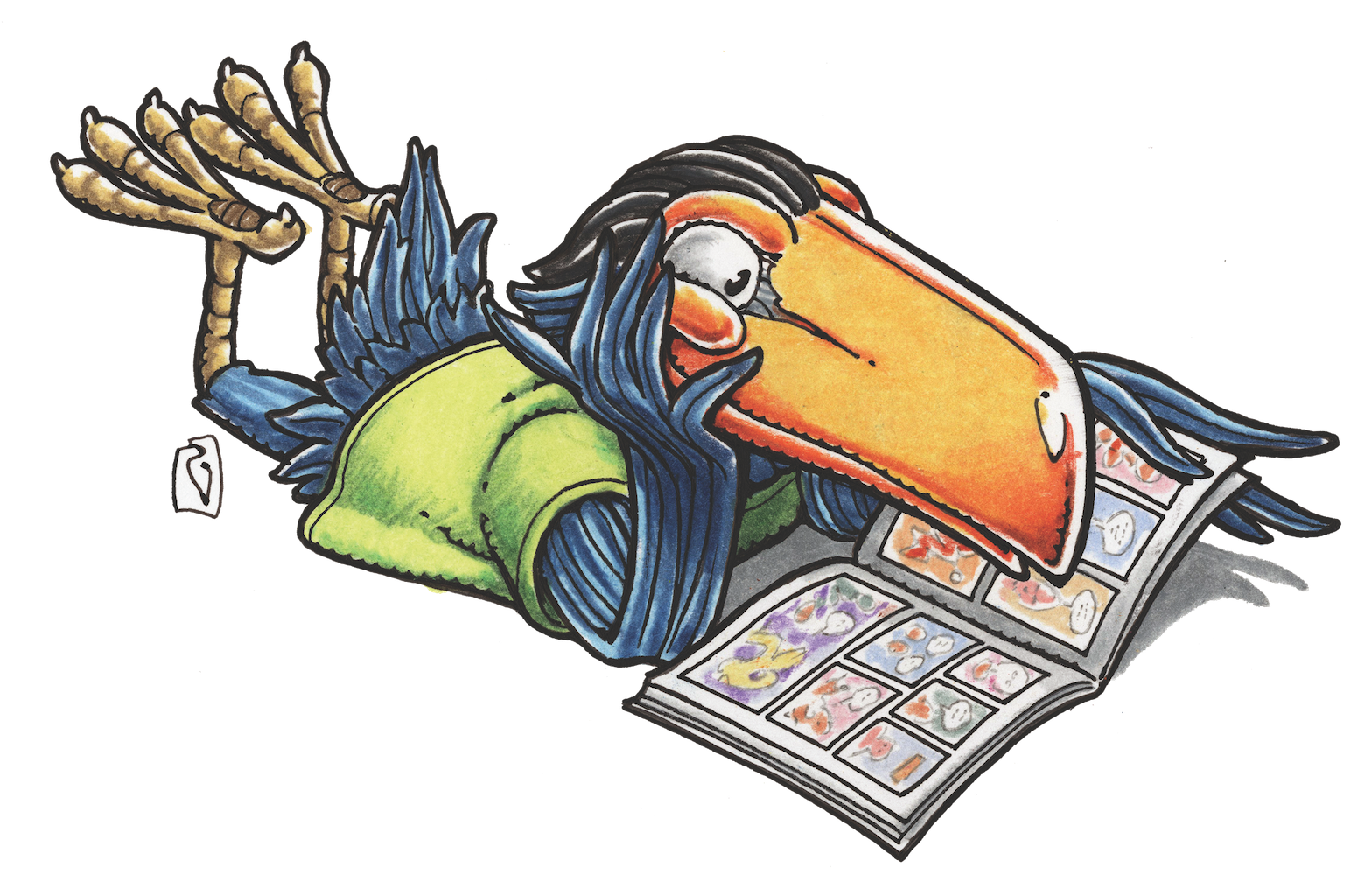
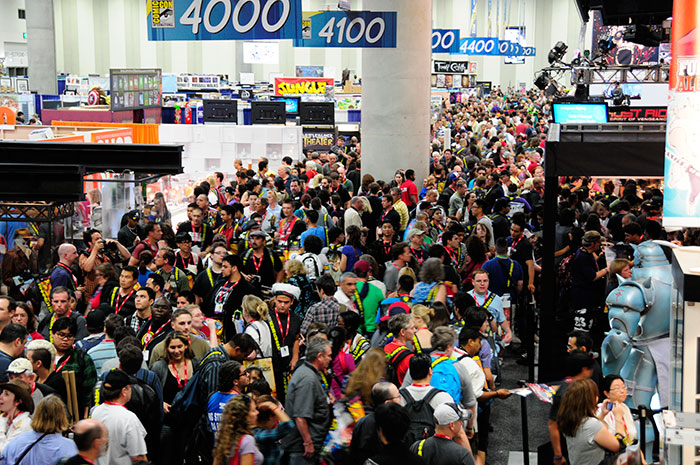
As I have explained at great length on my website, the saying “It is a proud and lonely thing to be a fan” originated with Robert Bloch (best known as the author of Psycho). When he coined that expression (in 1956), it was a time in which most science fiction fans knew each other primarily through correspondence. Even though a few large cities had clubs, most SF readers depended on the mail and letters columns for their contacts.
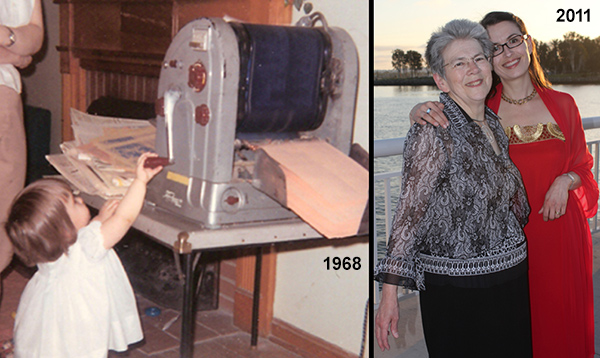
Some of the most active fans published their own amateur magazines and even trained their children to help. (Full disclosure: One-year-old Valerie did not actually help us to publish our Newfangles newsletter, but she was accustomed to our having the mimeograph in the living room, where we ran off, collated, stapled, and addressed each issue. She was an old hand at fandom by the time she accompanied me to Comic-Con in 2011.)
These days, heck: Anyone with a computer and the desire to communicate can craft an online presence. Anyone can be a fan. Of just about anything. They can even fund new projects via Kickstarter. In short, while fans still produce a treasure trove of material, life is not as lonely—as a glance at the lobby of the San Diego Convention Center during Comic-Con quickly makes clear.
Nevertheless, a few tips might improve our experiences even more.
Super-fanning.
Fans can accomplish impressive results. Consider Jennifer Brilowski. A fan of the Green Bay Packers football team, she especially admired Super Bowl champion and Most Valuable Player quarterback Aaron Rodgers, who wears the number 12. When she realized on 11/11/11 that the calendar would eventually reach 12/12/12, she could have just nodded, joked about it with her friends, and continued her other activities. Instead, she set up the Facebook Fan Page “Let’s Make 12/12/12 Aaron Rodgers Day” and began to spread the word. Eventually, the state of Wisconsin proclaimed 12/12/12 to be Aaron Rodgers Day, and in the meantime Brilowski used the occasion to raise more than $25,000 in donations for the Midwest Athletes Against Childhood Cancer Fund in his name.
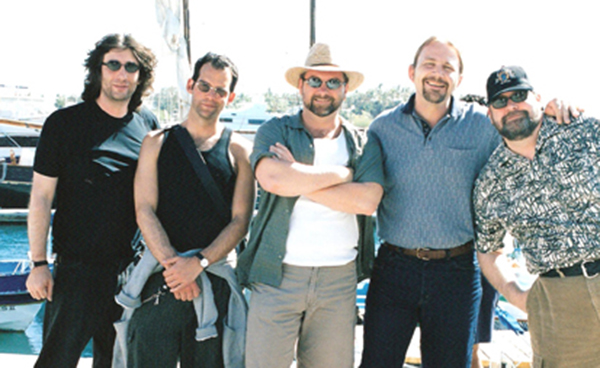
Super-fanning opportunities open to us these days include volunteering at convention events and participating in associated nonprofits. These include the Comic Book Legal Defense Fund, The Hero Initiative, and (come to think of it) Comic-Con International. (Some such projects even support other causes that offer volunteer opportunities. Consider CCI’s Robert A. Heinlein Blood Drive, now in its 37th year. It collected 1,413 pints of blood in 2012!)
When you participate in such events, you may come into contact with people who become lifelong friends. The CBLDF’s fundraising cruise in 2000, for example, found a number of fans and pros interacting for days in an unforgettable (delightful) experience.
So—what can a fan do these days? There doesn’t seem to be a limit.
Goals.
Travel with me to the 1960s in my WABAC machine. A man named Linn Sheldon (1919-2006) was appearing on Cleveland television in the role of an elf named Barnaby who lived in an Enchanted Forest in order to perform as the host of a popular daily children’s show. In discussing his career with a reporter from the Cleveland Press later, he told of an experience he’d had when he’d appeared at one of those supermarket events so often attended by his sort of celebrity.
A little boy had walked up to him and said, “I don’t ever want you to forget me, Barnaby.”
And hit him on the head with a bottle of ketchup.
Now, I must admit that the boy did accomplish his goal. Nevertheless, I suggest that he did not make the grade as a fan. Because fans are what make popular culture and its creators stronger, better, and more informed. Our goals are to preserve what we collect, support its creators, and spread the word about what we love and why we love it.
At a convention, want to help the creators whose work you like?
Understand that pros—yes, even the biggest names—are people. Even a star may need a restroom break, have the flu, or suffer from lack of sleep.
Look for body language. Have mercy on people who are trapped behind a booth. Help, if you can. (A bottle of water can be rejuvenating.)
Keep in mind that the other attendees at a convention, large or small, are multitasking. All of them: shy people, cosplayers, fans, little kids, stars, booth tenders. Some are even sad. (I heard a security guy at Comic-Con last year comment wistfully how much he’d like to attend the show—but that wasn’t why he was there. His job was to see to it that the rest of us had a good time.)
Take notes and photos and business cards. Write down what you’d like to remember, from booth numbers to tips on comics that look entertaining. Otherwise, it’s easy to lose track of things you’ll wish you had.
(Oh, and if you happen to be coming to San Diego for the first time: Rather than try to get your cab to the front of the Convention Center, you’ll do better to walk a block or so. You’ll save time. Just thought I’d mention it.)
Whether online or in person, you’ll make life more pleasant by considering the impact of what you say. I’ve heard more than one creator wincing in recalling episodes of being told that what they did decades ago was their very best work—ever. Which is to say that everything they’ve worked so hard to produce since then has been not up to par.
By the way, many creators pay their way to conventions by selling what they’ve brought. I blush to this day to recall that, when Stan Freberg was offering a number of recordings at his booth, my response was to realize that I had already purchased all of them elsewhere and so didn’t buy them at the show. It was only later that it occurred to me that it had been a terrific opportunity to purchase delightful gifts for friends and relations.
Get ready: Whether visiting your comics shop, scouring a used book store, or heading for The Biggest Pop Culture Festival on the Planet, update your want list. Check who may be there and plan accordingly. Prepare to have fun.
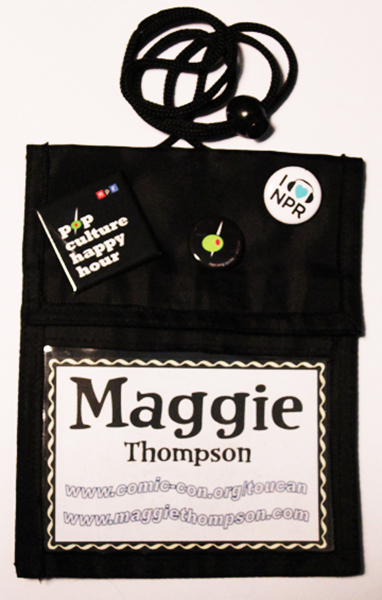
Identity.
At comics events small or large: You identify yourself with a community most completely by letting yourself be known.
Make it easy on people. I once had someone I’d known for years (but had seen only infrequently at conventions) come up to me, cover his nametag, and say, “You don’t remember me, do you?” I was smiling but annoyed.
Many folks (including me) are overwhelmed by the number of terrific people they meet at a show. And, so far, I continue to meet new fascinating people as well as folks I’ve known for years. The easier I can make it for all of them, the more likely we all are to be comfortable with each other. My name is so big on my home-made tag that Starbucks staffers at conventions greet me by name.
Because they can. The longer people have been attending shows, the more likely they are to be friends with people whose full name they can’t connect to a face. (Back In The Proverbial Day, Marvel VP Carol Kalish commented that she yearned for all conventions to provide nametags, because she knew countless retailers from phone conversations and letters and was so well known herself that those retailers assumed she would recognize them in person.)
All of this leads me to suggest that, while convention lanyards are convenient, they always seem to twist to hide identification.
Consider wearing your ID on a hanging pocket. You can easily add business cards, pens, and even your room key to the resource around your neck.
See you at the show—or wherever! Have a great time! Come up to say hi! (You’ll know me by my giant nametag.)
It’s easy to be cool when you’re a fan!
Maggie’s World by Maggie Thompson appears the first Tuesday of every month on Toucan!